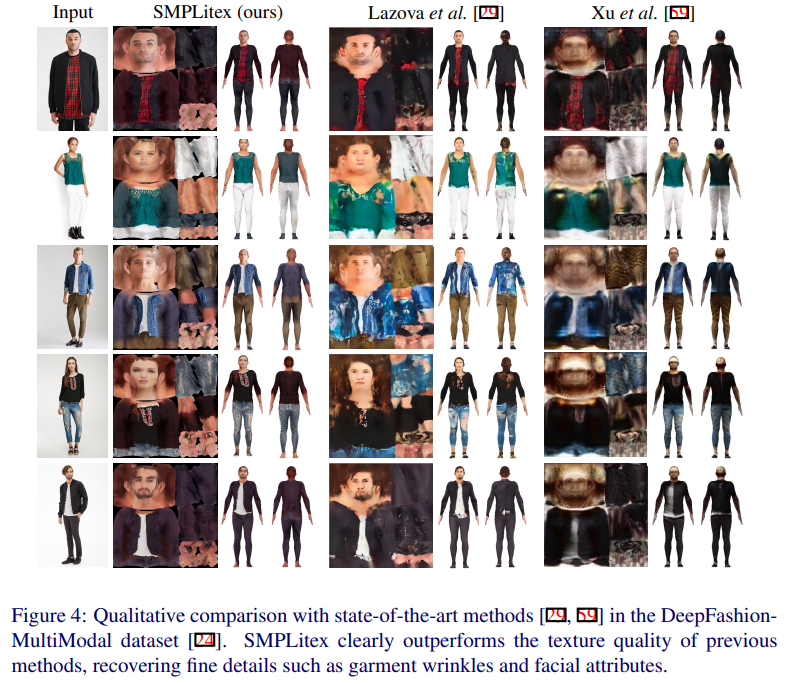In the ever-evolving field of computer vision and graphics, a significant challenge has been the creation of realistic 3D human representations from 2D images. This is not merely a technical hurdle but a gateway to numerous applications, from immersive virtual environments to advanced video editing. In response to this challenge, a research team has introduced a groundbreaking solution called “SMPLitex.” This research delves into the problem at hand, the proposed methodology, its intricacies, and the impressive performance of SMPLitex.
Creating 3D human representations from single images is a longstanding aspiration in computer graphics and vision. While we have made significant strides in capturing 3D shapes, textures, which give objects their realistic appearances, remain a formidable frontier. Imagine taking a single photograph of a person and being able to recreate their 3D shape and detailed skin texture, clothing, and even accessories. This is precisely the challenge the research team behind SMPLitex has set out to address.
Before delving into SMPLitex, it’s essential to understand the landscape of existing methods and their limitations. Traditional approaches have often relied on labor-intensive processes involving manual texture mapping or 3D scanning, which could be more scalable for real-world applications. These methods also struggle when dealing with occlusions or incomplete views of the subject, limiting their practicality.
The research team has taken a bold step by introducing SMPLitex, a revolutionary method for estimating and manipulating the complete 3D appearance of humans captured from a single image. SMPLitex’s unique integration of generative models initially designed for 2D images into the 3D domain sets it apart. The key innovation lies in establishing pixel-to-surface correspondences based on the input image, which is then used to reconstruct the 3D texture.
The heart of this method is a generative model specifically designed for complete 3D human appearance. This model is trained extensively, learning how human textures appear in 3D space. But the real magic happens when this model is conditioned on the visible parts of the subject within the single input image.
Pixel-to-surface correspondences are computed with remarkable precision, mapping the 2D image to its 3D counterpart. By leveraging this correspondence, SMPLitex can generate a complete 3D texture map that faithfully represents the subject’s appearance. The generative model’s adaptability to the visible parts of the image ensures that even when dealing with partially occluded subjects, SMPLitex can produce realistic 3D textures.
SMPLitex doesn’t just promise a paradigm shift; it delivers. The research team conducted rigorous quantitative and qualitative evaluations across three publicly available datasets. The results were nothing short of astounding. SMPLitex outperformed existing methods significantly, demonstrating its prowess in human texture estimation.
One of the standout features of SMPLitex is its versatility. It excels in accurate texture estimation and opens doors to a wider array of tasks. From editing and synthesis to manipulation, SMPLitex can seamlessly integrate 3D textures into various applications, enriching the world of computer graphics and vision.

In conclusion, SMPLitex represents a monumental leap forward in unlocking realistic 3D human textures from single images. By bridging the gap between 2D images and lifelike 3D reconstructions, this method holds immense promise. Its potential applications span diverse domains, from entertainment and gaming to healthcare and fashion. SMPLitex offers a glimpse into a future where capturing 3D human appearances is as simple as photographing. The research team’s innovation paves the way for more immersive experiences, enhanced content creation, and new computer vision and graphics horizons.
As technology advances, we can only anticipate the incredible possibilities that methods like SMPLitex will unlock. Fusing generative models and precise pixel-to-surface correspondences can revolutionize industries and redefine our interaction with digital representations of the human form. The journey from 2D to 3D has just taken a significant step forward, thanks to SMPLitex and its visionary research team.
Check out the Paper and Project Page. All Credit For This Research Goes To the Researchers on This Project. Also, don’t forget to join our 30k+ ML SubReddit, 40k+ Facebook Community, Discord Channel, and Email Newsletter, where we share the latest AI research news, cool AI projects, and more.
If you like our work, you will love our newsletter..
![]()
Madhur Garg is a consulting intern at MarktechPost. He is currently pursuing his B.Tech in Civil and Environmental Engineering from the Indian Institute of Technology (IIT), Patna. He shares a strong passion for Machine Learning and enjoys exploring the latest advancements in technologies and their practical applications. With a keen interest in artificial intelligence and its diverse applications, Madhur is determined to contribute to the field of Data Science and leverage its potential impact in various industries.






